- Learning time
- 20 minutes
- First play time
- 80 minutes
Tiny Towns
Designed by: Peter McPherson
In Tiny Towns, all players build their titular towns on individual boards in a 5×5 grid, and the goal is to score the most points. How you score depends on what you choose to build, as the buildings get points in different ways, sometimes depending on which other buildings are present!
The game comes with a variety of card decks that represent different buildings, and in setting up the game you deal one randomly from each deck, setting out seven in total – each has its very own tiny wooden building to represent it. You’ll notice the bottom of the cards show two things: one is the pattern you need to create on your board (using resources; more on that momentarily) in order to construct the building in question, and the other is how the building scores points. Cottages, for instance, are worth three points if they are ‘fed’, and there’ll always be a building that can feed them – if you build a lot of cottages, you might need a Farm or two as well. Chapels will score points for every cottage in your town; Theatres like having different types of buildings in the same row or column as them, and so on.
Each turn is simple: the starting player chooses one resource from stone, wood, brick, glass and wheat and all players take a cube of that colour and choose where to put it on their board: each square in the grid can hold a single cube. If anyone has completed a pattern of resources that matches a building card they may, if they want to, remove all the cubes and place the building instead, on one of the squares their resources were in.
Then a new turn begins with a new starting player. As the game continues, everyone slowly runs out of room and eventually, have no more options to build, or even add resources. The last player standing can take as many turns as they like before they too run out of spaces, and then points are scored: every empty square (i.e. a square with a resource cube but no building) is minus 1 point, and then all the buildings score in their specific ways. Once you’re familiar with the basic concept, you can add in the Monument cards, where each player has a monument card face-down and can choose to build it during the game, or not – if they complete the monument they reveal the card and read out the text on what the monument does (often just a new way to score points) before play continues as normal.
Joe says
This has almost a Tetris-like vibe, where you're trying to fill in the squares on your board to maximum effect. The way the board fills up slowly, as your completed shapes of 2 to 5 squares are replaced by a building occupying a single square, makes for a very interesting ebb and flow. It also makes it a real conundrum to plan ahead - add to this the fact that certain buildings can act as a wild resource in future buildings, and there's scope for some real pondering. And that's without considering the strategy of looking at other players boards to try and forestall their plans. In fact in the couple of games I've played we none of us did that - but it didn't feel like it dampened the fun; there's a lot to enjoy just optimising your own board without also try to stick it to your opponents. The wooden buildings are gorgeous and the colours chosen for those and the resource cubes are right up my street - much more interesting than the standard red/blue/yellow/green. I'm looking forward to more plays of this one.
The guru's verdict
-
Take That!
Take That!
Nothing to dominate the experience, although calculating players can see what resource helps them whilst simultaneously hindering others...
-
Fidget Factor!
Fidget Factor!
Everyone is involved on every turn, which is nice. But depending on which buildings you deal out in set-up, there can be pauses whilst people figure out where to put, for instance, this lump of stone they really didn't want...
-
Brain Burn!
Brain Burn!
Light on rules, but by no means easy to master. There's a tetris-like thing going on here of working out what you can fit in where, overlapping with the potential spanner in the works of being handed resources you really don't want.
-
Again Again!
Again Again!
Lots of variety in the cards, and each game is a new challenge. Even playing with the same cards, players may choose different options (and of course different resources...)

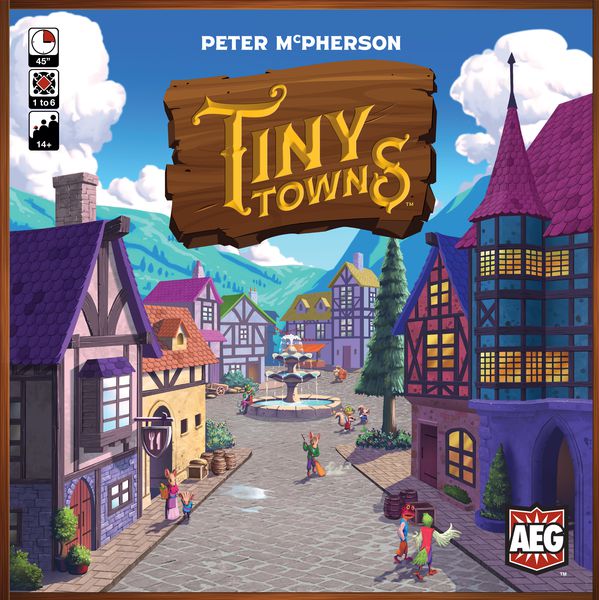
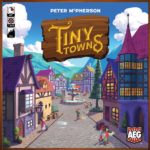
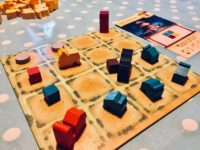

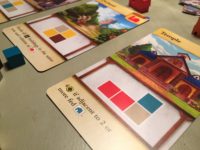
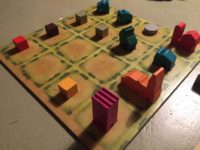



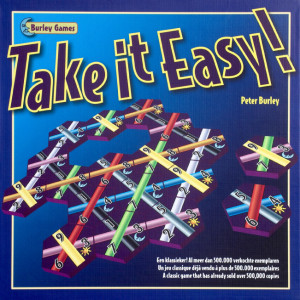
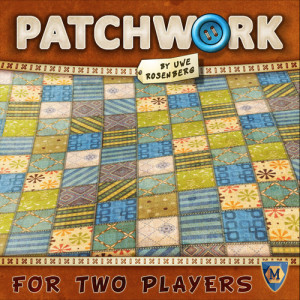
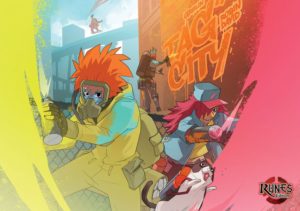
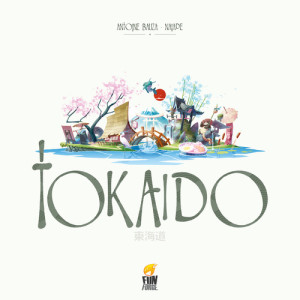
Sam says
This is a rather lovely family game that parents can enjoy with the kids, or even post-bedtime as a tactical challenge that comes with a modicum of interaction. Like games such as Take it Easy or Karuba, everyone gets the same thing, but chooses different ways to use them. Also like those games, as the game nears the finish line there's a sense of your luck running out, as someone picks up glass when you desperately needed stone... Players can choose to add the Cavern rule to offset this a little (everyone can dump two resources in their 'cavern' if they don't want to add them to their town) but there will still be that Tetris-like sense of plans going awry - or possibly, going perfectly! I'm unclear why the publisher put 14 and up on the box - despite the head-scratching nature of the play, the rules are very simple to follow for kids.